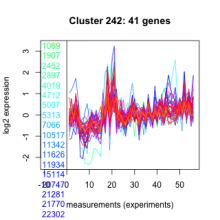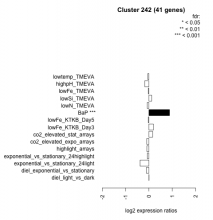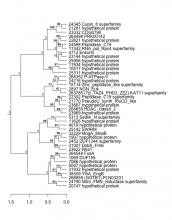268352 P-ATPase-VThalassiosira pseudonana
| Chromosome | Product | Transcript Start | End | Strand | Short Name | |
|---|---|---|---|---|---|---|
| 268352 | chr_2 | P-ATPase-V | 1986874 | 1992176 | - | P-ATPase-V |
| NCBI ID | Ensembl Genomes exon ID |
|---|---|
| 7452340 | Thaps268352.5, Thaps268352.1, Thaps268352.4, Thaps268352.3, Thaps268352.7, Thaps268352.2, Thaps268352.6, Thaps268352.8 |
| Expression Profile | Conditional Changes | Cluster Dendrogram | Discovered Potential cis-Regulatory Motifs |
|---|---|---|---|
Thaps_hclust_0242 |
 |
 |
   |
| KEGG description | KEGG Pathway |
|---|---|
| Not available | Not available |

Add comment